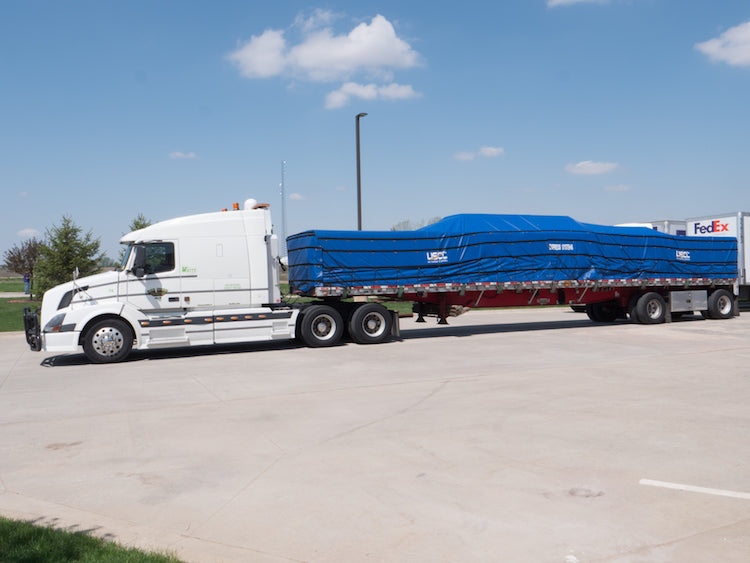
A Complete Guide to Flatbed Trailer Tarps
Flatbed trailer tarps protect cargo from weather damage and general wear-and-tear that highway travel can cause. Tarps are waterproof and often made of vinyl, kevlar, or canvas with a polyethylene coating for added protection. Read on to understand the differences among types of flatbed trailer tarps, how to properly tarp a flatbed trailer, and how to repair a torn tarp.
Types of Flatbed Tarps
The type of tarp you should use depends on what you are hauling and how big it is. Not all tarps are created equal.
Lumber
Lumber tarps work on loads that are tall and box-shaped. They have flaps at each end to cover the ends of lumber. Both the sides and tail flap of a lumber tarp fit with grommets and multiple rows of D-rings for a variety of tie-down points. So, two lumber tarps work best to cover a flatbed load.
Steel
Steel tarps are the most commonly used flatbed trailer tarp. They will also typically have grommets and D-rings built-in, however no flaps. They protect shorter and lower-profile loads, and also used in combination with lumber tarps.
Smoke
Smoke tarps only cover the upper front portion of a flatbed load. This protects loads from exhaust fumes and dirt. They are also used in combination with steel and lumber tarps when additional coverage is needed.
Machinery
Machinery tarps work to protect manufacturing or machine equipment from weather and road vibration. These heavy-duty tarps have grommets around the hems and multiple rows of D-rings on each side.
Coil
Coil tarps are commonly used to protect steel or aluminum coils and cable spools during transport. Their rounded top-half allows for a fitted cover over cylinder-shaped loads. The side flaps are more rectangular shaped and split in each corner to allow transport chain to pass through.
How to Tarp a Flatbed Trailer Load
A tarp is only effective if it’s applied correctly and secured tightly. Follow these step for tarping a load on a flatbed trailer.

1. Firstly, you want to lift your rolled-up tarp on top of the load and center it as best as you can.
2. After centering the tarp, then start from the back of your load. Start unrolling the tarp towards the back while keeping the centerfold of the tarp in the center of the load.
3. Once the tarp is unrolled, pull the bottom of the tarp so that it is covering the entire back of the load and touching the flatbed trailer.
4. Next, start unfolding the tarp once on each side, making sure it stays center.
5. If you are using multiple tarps, then repeat the steps above to cover any exposed cargo.
6. Once your tarps have been completely unrolled and your load is covered, roll up or fold in any excess tarp and secure the D-rings with bungee cords.
7. If your load is tall or oddly shaped, then you'll want to throw an extra tie-down strap over the tarp to prevent it from billowing.
How to Repair Tarps
Eventually, weather and prolonged use wear down tarps to the point of needing repairs to remain effective.
- Buy a flatbed tarp repair kit.
- Place the tarp on a flat surface with the underside facing up. Smooth out any wrinkled areas.
- Cut a patch slightly larger than the tear.
- Apply a heavy layer of tarp repair adhesive to one side of the patch and place over the tear.
- Use a roller to smooth out and remove any air bubbles. Let dry for at least three hours.









